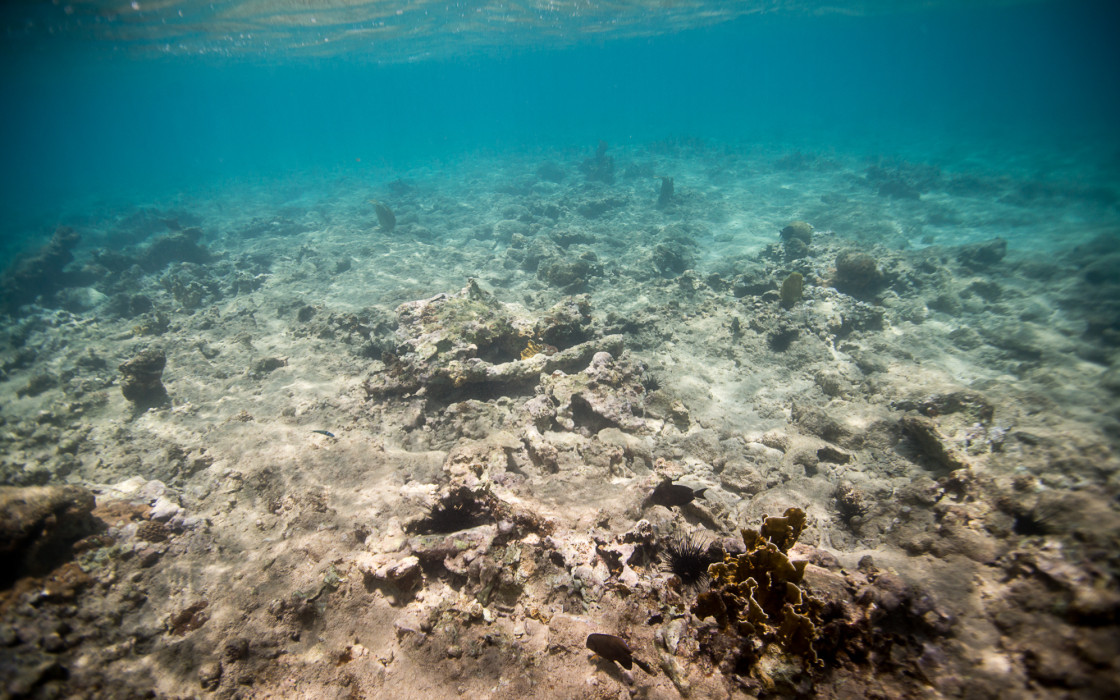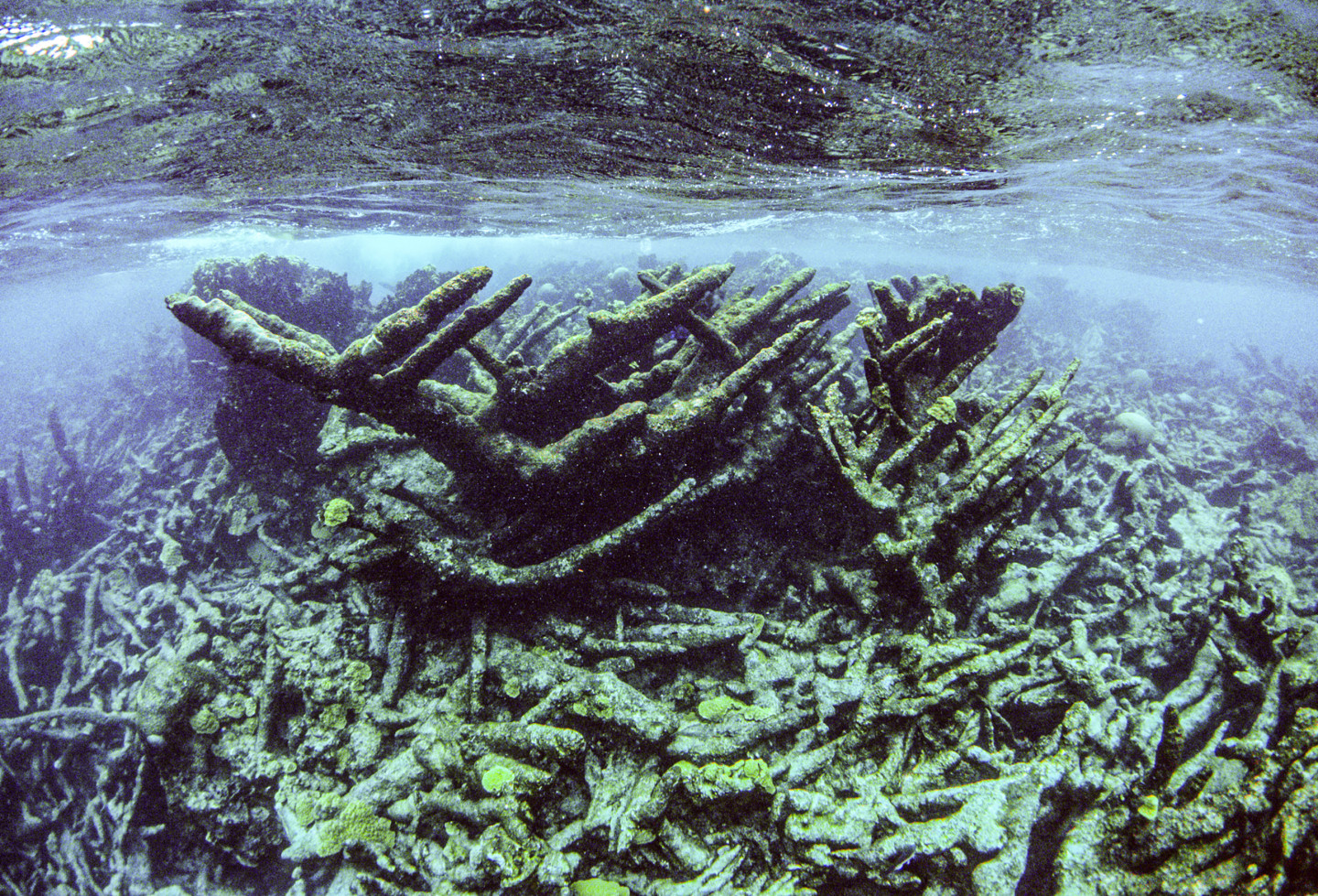Corals are dying
More than 80 percent of the corals in the Caribbean have disappeared, and Australia's Great Barrier Reef has lost more than half of its corals in the last 25 years. And many more could disappear by the end of this century. “For the first time, an entire globally dispersed ecosystem that supports millions of species and people may be lost at the hands of humans,” this statement of the International Society for Coral Reefs gets to the heart of the matter.
The coral crisis is our crisis! In a world without coral reefs, the most incredible ecosystem in our oceans would have perished and its loss would be an economic disaster. The authors of a study published in 2021 show the dramatic decline in reef productivity: "Our study indicates that the capacity of coral reefs to provide ecosystem services that are relied on by millions of people worldwide has declined by half since the 1950s (Eddy et al. 2021)"

Our world in the face of climate change
If the reefs were to disappear, the local populace will face increased vulnerability to the negative effects of climate change. The oceans are absorbing more and more carbon dioxide (CO2) from the air and as water reacts with carbon dioxide to form carbonic acid, our oceans are becoming more acidic. This ocean acidification makes it more difficult for corals to build up calcium carbonate. They need more energy to build up the massive structures of their calcareous skeletons and therefore grow more slowly. If a reef is then to regenerate after a disturbance and increasing algae competition makes life difficult for the corals, slower growth is extremely unfavorable. Scientists are interested in the "champagne reefs" to study how acidic seawater affects corals.
At the same time, our oceans are getting warmer. Reef-building corals receive a large part of their energy, i.e. their food, from their algae symbionts. Increased water temperatures disrupt this symbiosis and cause coral bleaching. If the heat stress continues, more and more corals die. Without corals, the reef structure also disappears. Within years, the remains of the calcareous skeletons that countless coral polyps have built up erode and the seabed becomes a flat desert. Due to the lack of protection from the reefs, the coasts are defenseless against the waves beating up the shores.
What happens when corals bleach?
Most reef-building corals live in symbiosis with single-celled algae called zooxanthellae. The algae make a significant contribution to the corals' nutrition, by passing on converted energy from the sun in the form of food. However, if the water temperature rises, the algae produce substances that are toxic to the corals, forcing them to reject their symbionts. The corals then appear bleached, their white calcareous skeleton visible through the tissue. It is eerie to be out and about in a reef like this - where once there was colorful life, there is now white silence.
When the temperatures drop again soon, the corals can take up new algae symbionts through the seawater and recover. If the stress lasts too long, the weakened corals die. In recent years, such bleaching events have been occurring frequently worldwide, leaving the corals less time to recover. In 2024, another coral bleaching event has already begun in the Great Barrier Reef - marking the fifth catastrophic event of this nature in just eight years (the Guardian).
Weakening reefs for decades
Tropical islands and coastal areas are used for economic purposes. Conversely, damage to the reefs has a direct impact on the lives of the people on-site.
The clearing of tropical rainforests, the extraction of raw materials and coastal development cause heavy sediment inputs into the coastal sea through wind, rain and rivers. Less sunlight penetrates the now murky waters, there is less oxygen, and the corals starve or suffocate. Pollution and wastewater from agriculture, aquaculture and the tourism industry wash toxins into the sea and promote the growth of algae in the reef through over-fertilization - algae are competitors to the corals and their symbionts for space and light.
Food webs are changing. For directly exploited resources such as fisheries yields are collapsing. But overfishing is another threat to the reefs: "fishing down marine food webs" is now a standing term. Fishing starts with the large predatory fish and ends with the small algae eaters - until there is almost nothing left but an empty reef. In many coral reefs today, only about 10 % of the original amount of fish can be found. Of course, this has consequences - the fishermen no longer have enough income and the population lacks the needed proteins from the reef in their diet.
Caribbean reefs - man-made fate
The reefs in the Caribbean are not doing well. Increasing human influence and waves of disease, which have led to the mass extinction of key ecological species, have considerably weakened the Caribbean reefs. The elkhorn coral (Acropora palmata) and the staghorn coral (A. cervicornis) once dominated the shallow reef areas of the entire Caribbean and provided protection along the coasts. In recent decades, their populations have declined drastically and today more than 90 % of these important reef builders have disappeared - both species are considered critically endangered according to the IUCN Red List.
The fate of the Diadema sea urchins, important grazers to keep algae competition to a minimum for corals, is also well known. Their populations collapsed in the mid-1980s, more than 98% of the Diadema sea urchins disappeared and the populations have not recovered to this day.
In recent years, a further threat to corals emerged, causing previously resistant species, in particular, to become ill. This threat is known as "Stony Tissue Loss Disease". The disease is spreading relentlessly throughout the Caribbean and is almost always fatal for the affected corals.
In 2023, there was a catastrophic heatwave in the Caribbean that lasted for months and caused massive coral bleaching. Due to the severity and duration of this heatwave many corals were unable to recover and died.
This text was written by Heinz Krimmer and Dr. Carin Jantzen as part of a joint project with Patagonia Marina, Dr. Vreni Häussermann and Günther Förterra, to raise public awareness of the global climate crisis and its impact on coral reefs. Its second part was originally published here.

